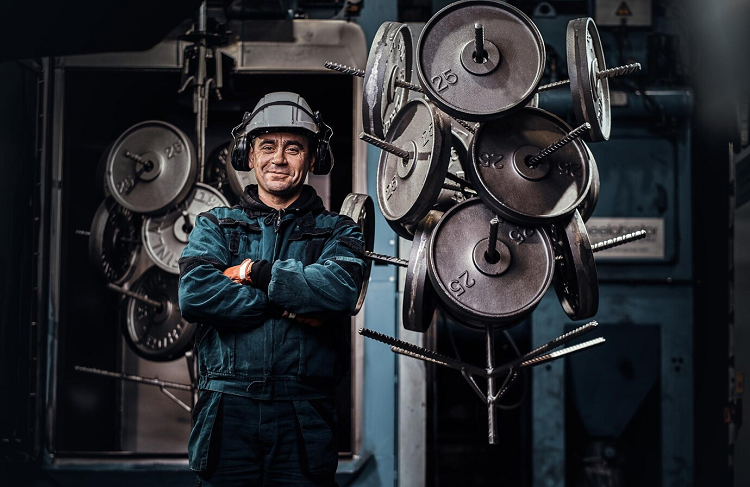Effective management of industrial equipment, particularly in sectors like defence, is vital in today’s competitive marketplace. The principal aim is to ensure optimal performance while curtailing unnecessary expenditure and downtime. Industrial machinery maintenance, including advanced technologies like those employed in Bendtech Defence, can often be challenging, but following the right principles can drastically increase machinery efficiency and longevity.
Table of Contents
Understanding the Importance of Maintenance
Successful industrial outfits understand that maintaining working equipment is crucial for sustained operations. Without proper preventive measures, machinery is prone to common issues like accelerated wear, tear, and eventual breakdown, potentially leading to production stoppages. Implementing effective equipment of protocols not only mitigates these risks but also unlocks enhanced performance and efficiency. By prioritizing this, companies can minimize downtime, optimize productivity, and ultimately ensure the longevity of their industrial assets. Thus, proactive strategies are indispensable for achieving operational excellence in today’s competitive industrial landscape.
Scheduled Maintenance: An Essential Practice
Scheduled maintenance forms a vital component of effective industrial equipment management, encompassing a range of activities conducted at regular intervals, from minor inspections to comprehensive overhauls. The primary advantage of scheduling lies in its proactive nature, allowing for the detection and resolution of issues before they lead to costly downtime. However, it’s crucial to tailor the policies to the specific needs of each machine category, as requirements can vary significantly.
Machine-specific schedules are essential for optimal performance and longevity, incorporating tasks such as lubrication, temperature monitoring, pressure checks, alignment, and calibration. For complex diagnostics, tools like 8-channel oscilloscopes can be invaluable in monitoring multiple electrical signals simultaneously, ensuring comprehensive equipment assessments. By adhering to these tailored schedules, businesses can minimize the risk of breakdowns and reduce instances of decreased efficiency. Proactive and customized strategies are key to maximizing equipment reliability, productivity, and overall operational success in industrial settings.
Automation and Computerization: Leveraging Technology for Efficiency
Today’s world is increasingly computerized and automated. Industrial maintenance practices should not be left behind. State-of-the-art machine diagnostic tools can now identify impending service needs and predict potential malfunctions. Leveraging such predictive maintenance capabilities can significantly minimize unexpected machine breakdown, thus improving production output and operational efficiency.
The use of automation further diminishes the chances of error and optimizes machine performance. By integrating intelligent drones and robots into your operations, you can inspect hard-to-reach areas. In large industries like mining, where heavy machinery is dominant, this can be a game-changer.
Training Your Maintenance Personnel
While technology undoubtedly plays a crucial role in industry, it’s essential not to overlook the significance of well-trained personnel. Maintenance staff should possess not only the necessary skills to execute tasks but also a deep understanding of the machinery they oversee. This combination ensures not only efficient operation but also the ability to diagnose issues accurately.
Training becomes even more impactful when coupled with insight into the inner workings of the machinery. Armed with this knowledge, this personnel can proactively identify potential problem areas and implement timely solutions, minimizing downtime. Regular training updates and participation in workshops further enhance the skill set of the teams, keeping them abreast of the latest techniques and technological advancements.
Utilizing Quality Parts and Components
It’s crucial to acknowledge that high-quality machinery relies on high-quality components to operate at its peak performance. While sub-standard parts may offer short-term cost savings, they can significantly escalate their needs and potentially cause long-term damage to the equipment. Opting for inferior components might initially appear economical, but the consequential increase in their demands and potential equipment damage could far outweigh any initial savings.
Investing in top-tier components such as hose wraps ensures optimal functionality and minimizes the risk of unexpected breakdowns while prolonging the lifespan of the machinery.
End of Life Equipment Management
Despite meticulous planning and rigorous efforts, every machine will eventually reach the end of its lifecycle. In such cases, it can be financially sensible to opt for equipment replacement rather than continually investing in repairs and maintenance. Proper management of end-of-life machinery entails making timely and decisive decisions regarding equipment decommissioning and replacement.
By recognizing when a machine has reached its operational limits and promptly transitioning to newer, more efficient equipment, businesses can minimize costs associated with prolonged maintenance and maximize overall operational effectiveness. Effectively managing the end-of-life phase of machinery ensures smooth transitions, maintains productivity levels, and optimizes resource allocation within industrial operations.
Final Thoughts
Maximizing efficiency with industrial equipment requires a well-balanced approach that incorporates regular maintenance, leveraging technological advancements, prioritizing quality components, providing ongoing training, and making cost-effective decisions. Integrating these measures into your industrial policy facilitates a substantial increase in the lifespan and overall efficiency of your machinery. It’s essential to recognize that the key to success lies not in simply increasing maintenance expenditure, but rather in optimizing these practices for greater efficiency and effectiveness.

